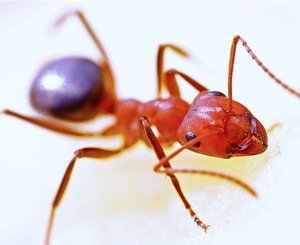Blame the ‘Impressive Fire Ant’
Blame the ‘impressive fire ant’ for delayed at Vancouver’s airport and don’t expect things to get much better

Richmond B.C. — The invasive fire ant continues to spread in the Lower Mainland, wreaking havoc on Vancouver airport runways and forcing CP Rail to burn the soil on the Arbutus corridor in attempts to eradicate them.
Last summer, several planes hit birds feeding on the fire ants at YVR, forcing a series of short runway closures.
And the pest problem is no longer confined to the common European fire ant.
It has branched out to include a lesser-known species dubbed the “impressive fire ant,” according to Thompson Rivers University entomologist Rob Higgins.
“We’re talking of two different types of fire ants,” said Higgins, noting both fire ants appear to be on the move. “We’ve got them in virtually every municipality.”
We’ve got them in virtually every municipality
Higgins has been conducting surveys of known fire ant infestations and doing random sampling throughout southwestern B.C. to assess the extent of these tiny aggressive insects, which possess a painful sting and swarm very quickly when disturbed.
The investigation initially focused on the European fire ants, which spread naturally over short distances by budding off new colonies in which a queen and a group of worker ants leave a nest to form a new colony.
His research took a turn, though, after a Burnaby entomologist sent Higgins a sample a few years ago of a fire ant discovered at his home. Higgins, who was heading back east to compare his collection, took the ant along and determined it to be the Myrmica specioides, a lesser known species from Europe, that undergoes mating flights every summer.
But it wasn’t until later that fall — after a call from Vancouver International Airport’s wildlife program — that Higgins started researching the impressive fire ant.
Airport officials were worried about a spate of collisions between small birds, mostly barn sparrows, and planes on the runway during July and August, which forced them to close the runway for five to eight minutes each time to clear away the mess.
“They wanted to know what they’d been eating,” Higgins said. “I looked at their gut contents and they were full of impressive fire ants. They’d been eating a lot of them, especially the winged queens.”
Higgins said it appears the impressive fire ants, who nested in the grasslands around the airport, were attracted to the end of the runway for their mating flights. The swarm of ants then attracted the birds, most of them barn swallows. In one month last summer, he said, there were 50 collisions between birds and planes. One day, there were five runway closures.
David Bradbeer, a runway wildlife specialist at YVR, confirmed the situation. “It is a service inconvenience, but we do close the runway to remove the carcass because we don’t want another bird to be attracted and get hit.”
Bradbeer said the situation only became a problem in the past year. He noted the YVR wildlife management branch has been trying to understand the ecology of the many species around the airport, including the swallows and fire ants, to figure out how to deal with the problem. The investigation has just started, he said.
Fire ants are difficult to control or eradicate, even with pesticides.
Higgins acknowledged the impressive fire ant is “just emerging as an invasive species here” and while he and Bradbeer are looking at running an experiment at YVR to control the ants, he expects it could take a year to get the permits.
Meanwhile, the Canadian Pacific Railway, which is tearing up its tracks along the Arbutus corridor on Vancouver’s westside, has been incinerating the soil along the tracks and said it will now also burn the rail ties to ensure the ants aren’t transported to another location.
“I just got confirmation we will incinerate the ties in that whole area,” said CP spokesman Jeremy Berry, noting the move will likely happen next week.
Although Higgins has yet to tally the numbers he has collected through his research, in the past four years, the ants have been introduced to at least 25 locations on Vancouver Island and the Lower Mainland through the movement of landscaping materials, soil and potted plants.
He noted the most common areas for fire ants tend to be Vancouver and Chilliwack, but they were recently spotted in West Vancouver, Burnaby and handful of spots in the District of North Vancouver.

